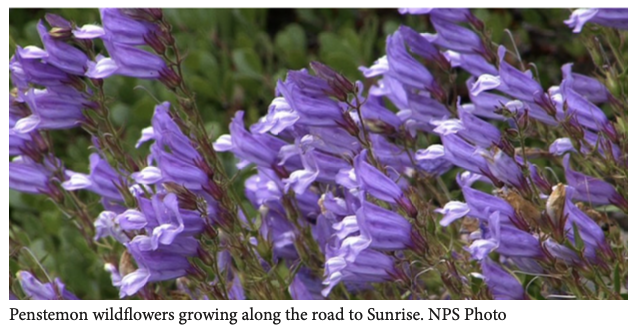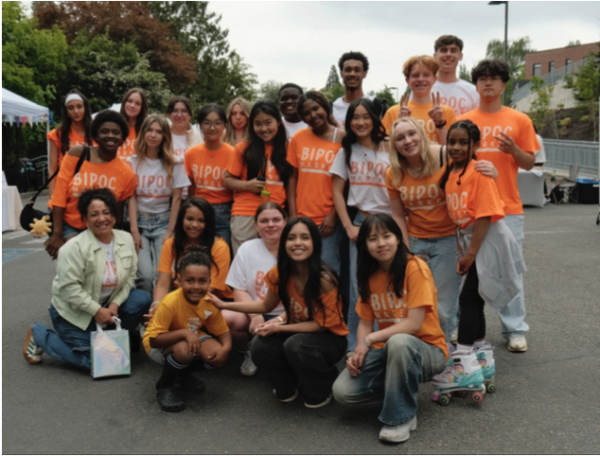IA Engagement: How COVID-19 Impacted Mental Health for Adolescents
November 14, 2022
Content warning: This article contains mentions of suicide.
While speaking about mental health is slowly becoming more normalized in the US, it doesn’t mean that suicides have stopped. With the COVID-19 pandemic, suicide rates actually sparked, likely due to the social isolation that occurred during lock-down. However, frequently, suicide is seen as a general political issue—there is no specification on gender, age, race, etc. Suicide is the second most likely cause of death for 10-24 year olds in Washington and the third most likely cause of death in the U.S. generally. 20% of high school sophomores in Washington have seriously considered suicide. While working to prevent suicide is important, it’s time to move on from trying to prevent suicide generally to trying to prevent suicide within certain demographics through different techniques, and adolescents should be at the top of the priority list. Negative well-being affects the country as a whole and vice versa—think of the happiness index, or people facing inequality and violations of their human rights.
Personally, as an adolescent, I have had to juggle my mental health since I was young. Despite the early signs of depression and anxiety in my childhood, I was 13 when I was diagnosed and didn’t really understand how to “fix” it. As I’ve gone through my teenage years, I’ve noticed more and more peers with bad mental health, the majority of whom have no idea who to reach out to or what to do to get support. This topic is very important to me because of these personal experiences—no one deserves to feel isolated, and everyone deserves to understand what mental health is and how to manage it. With the pandemic, I’ve noticed that people have begun to feel worse. As such, for my global politics IA, I’m exploring the question “what are the impacts of the COVID-19 pandemic on Pacific Northwest adolescent, particularly teenage, suicide rates?”
While suicide falls underneath the concept “deaths of despair,” not all deaths of despairs are suicide. Rather, deaths of despair also include deaths from alcohol use or drug overdose. As such, while deaths of despair increased during the pandemic, suicides in Washington actually decreased slightly overall—but in adolescents, the rate rose. It’s also important to note that while alcohol use and drug overdose isn’t necessarily suicide, alcohol and drug abuse frequently comes with unstable mental health. According to Washington’s State Department of Health (DOH), each successful suicide causes the state to lose, on average, $1.9 million in future work, and for each unsuccessful suicide, $11,000 in work loss. For capitalist theory, high suicide rates is bad for the state because it decreases production which is needed for continued development. Realist theory would agree: higher suicide rates means less citizens which means less ability to distribute the population into security or the market, which could lead to a decline in the power of the state (and then, overall, the country). So what is Washington doing to prevent this? The short answer is: nothing new. Shortly before the pandemic in Washington truly took hold, in January of 2019, a policy was passed where individuals are allowed to self report themselves as ineligible for firearm purchasing. While it is suicidal preventative, making it harder to access a weapon for suicide, it can’t be correlated with the pandemic. It took nearly 80 years to build a suicide barrier on The Aurora Bridge, a place where over 230 people have committed suicide by jumping. Even then, the fight to have a suicide barrier was a tedious one: arguments against the barrier included price (an estimated $8 million), that people would find other ways to attempt (despite studies showing otherwise), the fact that the city of Seattle would have to confirm any decision about the bridge made by the state and aesthetic preservationists
With this estimate, only 5 suicides would outcost the price; the actual cost ($5 million) only 3. A realist could argue that because in Washington almost 2.3 million people are immigrants (or have at least one immigrant parent), the cost is canceled out by the amount of people coming into the state, presumably working. As such, the $5-8 million price is unreasonable. Liberalist theory would argue against this for two reasons: the first being that despite the fact that immigrants do bring the state money, building the barrier would still bring in more income for a little cost. The second argument would be that liberty (otherwise known as life) is one of the rights the constitution promises, and as such any necessary action should be taken to help with the act of liberty.
The longer answer is that while the state isn’t particularly doing anything new, smaller actors are. King County officials announced in September 2022 that they are bringing a tax proposal to the April 2023 ballot. This proposal includes funding the construction of 5 different crisis care centers over the region (including one specialized for youth), and raising wages for health care workers to prevent the continual increasing rates of such workers leaving the industry. While not a Washington wide tax proposal, it is a starting point, especially considering that the Seattle-Tacoma area is the second highest suicide attempt rate out of the US’ largest metropolitan areas. In Seattle, more businesses promoting non-medical, remedial therapeutic services have popped up. This includes businesses such as “Float Seattle” (a place with sensory deprivation pods) and “Smash(It) Seattle” (a place where people purposefully destroy trash, like old dishes or electronics). However it’s important to note that even these businesses have realist theory undertones. Rather than being free and provided by the government, those who are mentally ill (frequently those who cannot afford methods like these, especially adolescents), a business makes a profit on the services they provide, increasing the development of the state.
Take this article as a reminder to check on your peers, your friends and your family. Spread awareness. If you suspect someone to be considering suicide, reach out to them. Research has shown that talking about suicide doesn’t give someone the idea to commit suicide. For those who need it, here are some sources you can reach out too if you need it:
TeenLink (a teenager-ran helpline for teenagers): 1-866-833-6546 (1-866-TEENLINK)
24-Hour Crisis line for Pierce County: 1-800-576-7764
24-Hour Crisis line for King County: 1-866-427-4747
Washington Recovery helpline: 1-866-789-1511
Washington Warm line (ran by peers who also have had mental health changes): 1- 877-500-9276 (877-500-WARM).
This article serves as an engagement for the author’s Global Politics Internal Assessment. It has been edited for length and clarity and to uphold Inkwell’s standards for published content.









